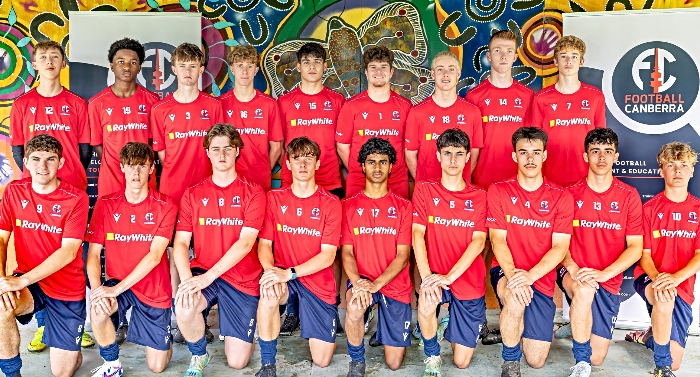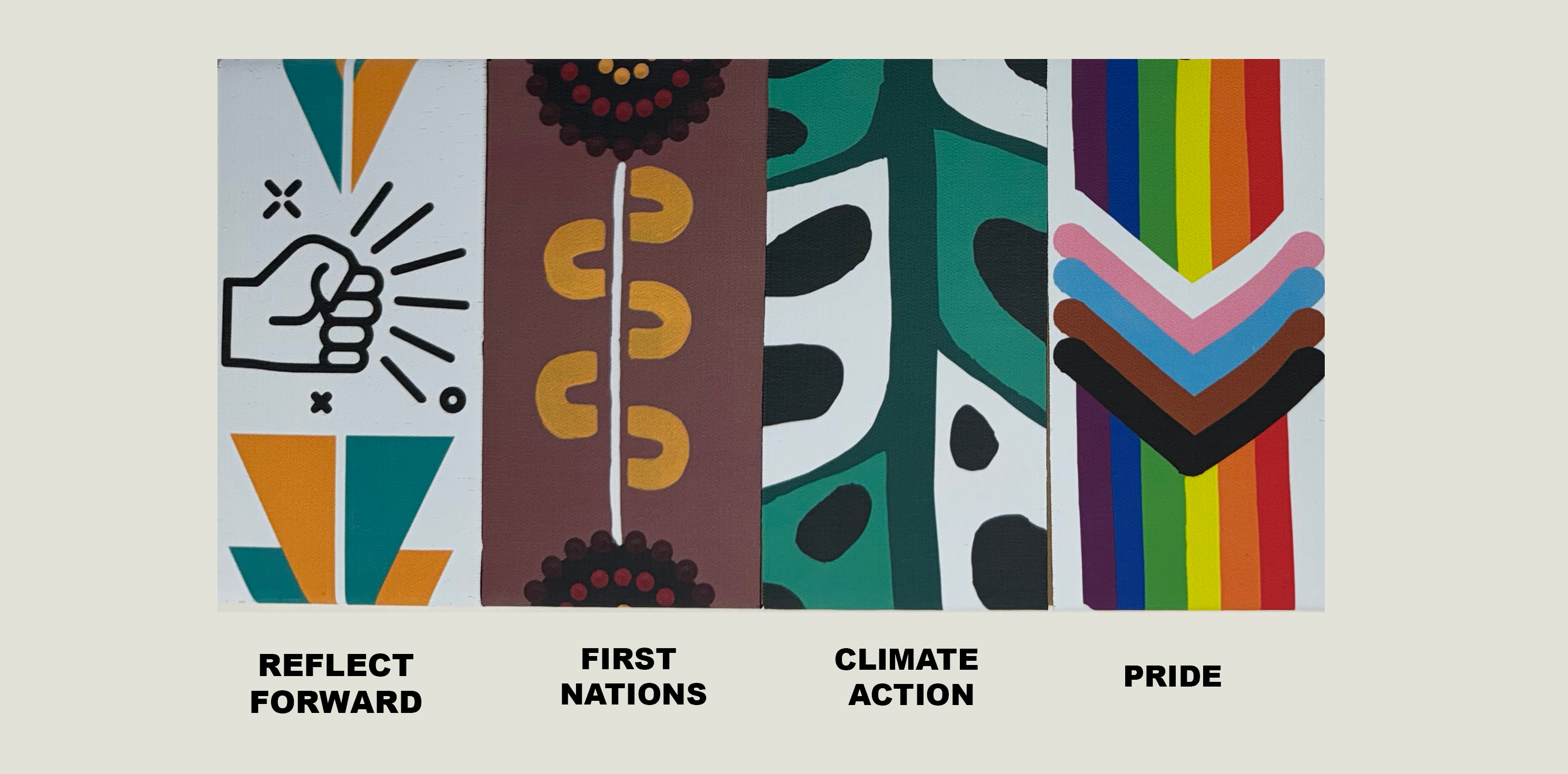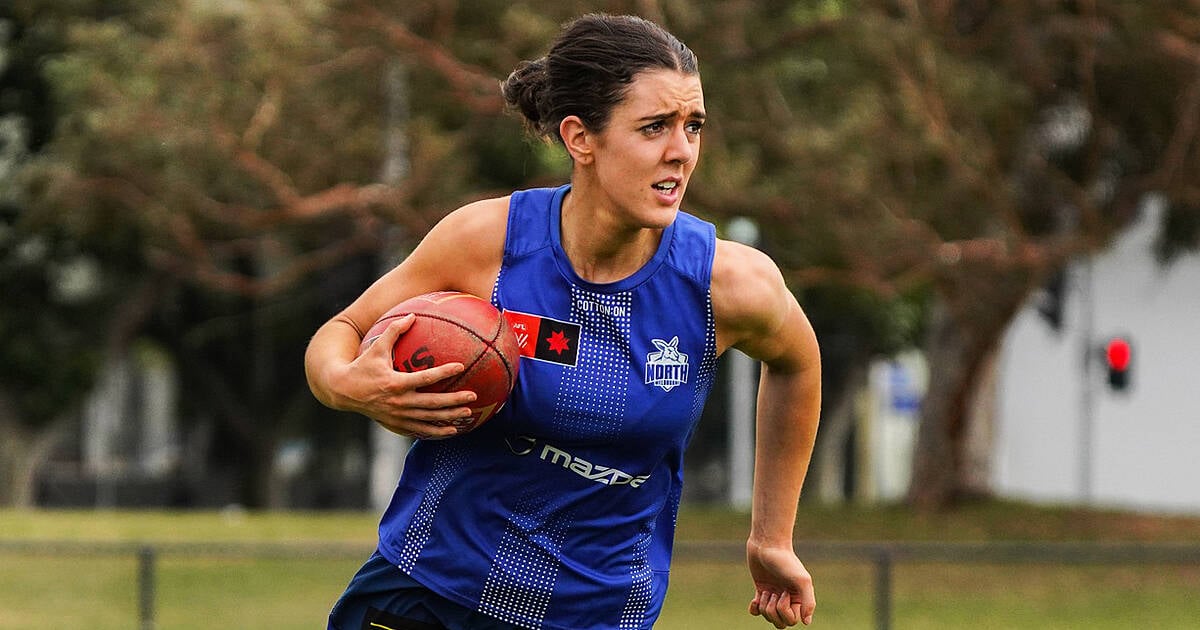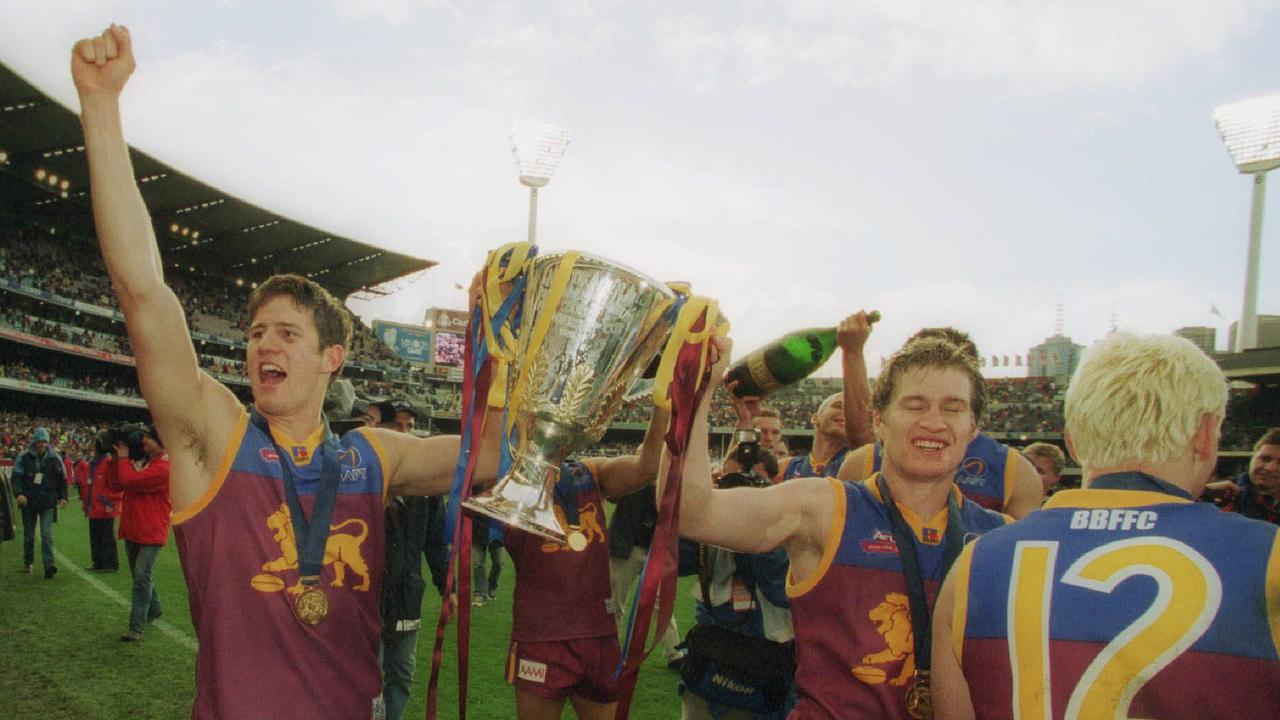Two interstate teams are vying for the AFL premiership. But their roots in Victoria still run deep

- by Admin
- September 24, 2024
Ninety years ago – half a century before the Sydney Swans set up shop in the Harbour City — James Lindesay was heading to watch his team play at Lake Oval, on the banks of Melbourne’s Albert Park Lake.
“I was age 13 in 1933 when I first went to the old ground and saw Bob Pratt. He was an extremely high mark,” Mr Lindesay said.
South Melbourne football star Bob Pratt, who was renowned for his soaring marks. (Supplied)
The now 103-year-old, along with his sister Joyce Schirrman, 99, grew up watching the South Melbourne football team — which would later become the Swans — each Saturday.
“It was sad for us South Melbourne supporters to see our team pack up and leave Melbourne Park and go to Sydney. We sort of were cut off,” Ms Schirmann remembers.
A painting of the Lake Oval, circa 1960, by Paul Crompton. (Supplied)
But that hasn’t stopped the siblings’ devotion to their club.
“Sometimes I can’t go to sleep. I’m still thinking about the football and I think, ‘Oh, this is ridiculous!'” Ms Schirmann said.
The brother and sister duo will be among the Victorians this weekend remembering both grand final teams’ beginnings in the garden state.
The siblings back in 2012, celebrating Sydney’s premiership win. (Supplied)
The South Melbourne football team relocated to Sydney to become the Swans in 1982, while Fitzroy became part of the Brisbane Lions in 1996.
On Saturday, Mr Lindesay will be donning the personalised Sydney Swans jersey he was given for his 100th birthday during COVID-19 lockdowns. Fittingly, it has the number 100 hand-sewn on the back.
James Lindesay, now almost 104, shows off his personalised jumper. (ABC News: Mietta Adams)
Ahead of his 104th birthday next Tuesday, he’s hoping for the ultimate gift of a premiership.
“I’m very apprehensive, but they are capable,” he said.
Old faithful gather in Fitzroy, South Melbourne
Meanwhile in Fitzroy, the Royal Derby Hotel has become something of a home base for Melbourne-based Lions supporters.
Publican Kane Trancedi, himself a devout Lions supporter, is expecting up to 450 Lions faithful to pack the joint on Saturday.
Publican Kane Trancedi is preparing for a big turnout on Saturday. (Supplied)
“We’ve got a massive supporter base, and it … hasn’t really come together for ages,” he said.
Fellow Lions diehard Ian Crawford has been a fan since he was in primary school in the 1950s.
Mr Crawford, who is chairman of the Fitzroy Brisbane Lion’s historical society, can still recall the “gut-wrenching” time when Fitzroy supporters had their club “taken away”.
Old Fitzroy Football Club memorabilia dating back to soon after the club’s formation. (ABC Archives)
But following the 1996 merger with the Brisbane Bears, the club came back in full force.
“The colours were retained, the lion was certainly retained, and also the song. I did personally adjust to that, and thought: ‘Well, I might as well give it a go,'” he said.
Ian Crawford, holding a blazer he once wore as a recruiting officer for the Fitzroy Football Club. (Supplied.)
After the Lions narrowly missed out on a premiership last season, Mr Crawford is hoping they go the distance this year.
“Personally, I think it would be fantastic for us to win,” he said.
“I think it’s fabulous that we’ve come back again, and we’re vying to hopefully win the premiership this coming Saturday.”
South Melbourne — and now Swans — fans have long flocked to the Rising Sun Hotel, around 100 metres from the club’s original home ground.
Nowadays, owner Jon Woolley says more than 100 people show up to the pub to watch the first game of the season, and that number swells as the season ramps up.
“There’s such a full-on fan base here. It’s more than what people realise,” he said.
The ‘Barassi line’
Dr Hunter Fujak, a senior lecturer in sports management at Deakin University, describes this grand final as “really significant”.
“AFL is a code that has its origins in Victoria and the south-western states,” he said.
“Yet we have a grand final in 2024 that involves two north-eastern states, and that’s a unique situation.”
A photograph of a match from the early days of the Victorian Football League. (ABC Archives)
Football codes have historical legacies in different parts of the country, Dr Fujak said.
The “Barassi line” is a term coined in the late 1970s to describe a sociocultural line that divides Australia into areas more interested in Australian Rules Football (the south-west) and those more interested in the rugby codes (the north-east).
Australia’s interest in Aussie Rules and the rugby codes, according to the Barassi line. (ABC News)
“It’s not exactly Australia divided by half, and it’s not exactly by state, but [it] tries to sort of capture the divergent football preferences of those areas,” Dr Fujak explains.
“This really will be a celebration of the AFL’s growth into those northern states that aren’t historically AFL areas.”
For many veteran supporters, this year’s grand final will be something of a “homecoming”, he added.
“There is still a presence of local fans in in Melbourne and Victoria who still have an affinity to these clubs, even though they now are domiciled interstate.”
Grand final rematch ‘a dream come true’
The only time the two teams have faced off was way back in 1899, in a VFL final, when they were known as the South Melbourne Football Club and the Fitzroy Football Club.
A team photo of premiers Fitzroy Football Club in 1899, the fourth year of the VFL. (ABC Archives)
During the semi-finals this year, the prospect of a repeat match-up crossed Lions fan Ian Crawford’s mind.
“I think it’s a dream come true. Truly,” he said.
And he naturally hopes history will repeat itself in full.
“It’s ironic how the last time the two teams played … was in 1899 of course, Fitzroy won by one point, so maybe that’s an omen as well.”
In Brighton, just a few suburbs down from where their footy fever took hold, Mr Lindesay and his younger sister Ms Schirrman will be dreaming of a very different result.
Joyce Schirrman is hoping to see another Sydney Swans grand final victory this Saturday. (ABC News: Mietta Adams)
If their team does get up, the siblings say with a chuckle, they won’t be going out to get drunk.
A quiet celebration at their aged care home, and the thrill of victory, will do just nicely.
The Latest News
-
December 25, 2024‘Stops riots outside the Members Stand’: Aussie skipper backs cult hero for big MCG return
-
December 25, 2024Sam Konstas is the right player at the right time for Australia. Here’s why
-
December 25, 2024Christmas at the ‘G! Aussie stars and family lap up big day
-
December 25, 2024‘They’re the idiots who picked me’: Aussie skipper’s hilarious message to relieve pressure on new opening sensation
-
December 25, 2024Boxing Day NFL on Netflix: What time is Mariah Carey performing in Australia? | Sporting News Australia





